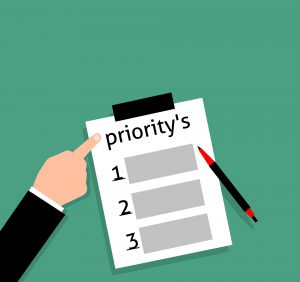- June 29, 2021
- Posted by: andreag
- Category: High PerformanceInternal ImprovementStrategic Planning

The value of strategic planning has always been a subject of some controversy. The final verdict in management literature is that it is invaluable if done well, not so much if not.
Over three decades ago now, PGS designed its Vision Navigation® (VN) strategic planning system to address some of the pitfalls of existing strategic planning methodologies. Fast forward 30 years and over 300 strategic plans for organizations of all types and sizes. Our Vision Navigation® process has stayed true to its roots with what we know is essential, while we have continued to add greater clarity and depth as we study and learn. Our biggest and most recent update is to create an entirely online VN process and tool known as the Vision Navigation Portal. The VN portal enables clients to create, manage and update their plans virtually, which is particularly important in today’s stay-at-home working mode.
In creating the VN Portal, we held to the strengths which Vision Navigation® is known for. These keys to success fall in two main categories: how you create the plan and how you implement the plan. Over the years, we have tracked the completion rate of our clients and what made them successful both on the front end when creating the plan and their own keys to successful implementation. We have shared with you some of the specific practices that have consistently shown themselves to be secrets to success in past posts. Below and in a subsequent post this summer we share additional keys to success that we focused on when creating the VN Portal.
This first set of keys applies to the front end, the creation of the strategic plan. We have fully incorporated them into our VN Portal process. If you are in the beginning stages of your strategic planning , we encourage you to make sure you include the following:
- Effective Strategies

A strategic plan, at its most basic level, is the declaration of your purpose as an organization, your vision for the future and the key strategies you have chosen to create that future vision. Effective strategies are developed from a comprehensive and honest look at your strategic environment, i.e., your competition, your customers, emerging tech, the economy, demographics data, etc. and from listening to your customers and employees who are on the frontlines of customer service This evaluation becomes the basis for developing effective strategies to grow the organization and move it toward the vision. Competitors, new technologies, and other societal changes are happening so rapidly that you need to evaluate your business and its environment from the ground floor annually and not assume the past will predict the future. Effective strategies are theories. You study the environment and listen to customers and employees, then develop a theory that if you do X as an organization (your strategy), Y will occur (progress toward your vision). Good research produces good theory (the “why” behind the strategy) and therefore produces effective strategies. - Honest Assessment of Barriers to High Performance
One of the most significant value our process has brought to clients is revealing the nature and impact of barriers to high performance within the organization that were previously unknown and not handled. These come in the way of internal improvement projects, i.e., a focus on fixing the systems that will allow the organization to implement strategies successfully. We have found that the norm for first-year clients is a strategic agenda (the mix of outward strategic and internal improvement projects) heavily weighted toward internal improvements. There is a realization that new strategies for growth/innovation will not be effective without addressing newly revealed problems.An honest assessment of an organizations barriers to performance requires that input must be confidential and incorporate viewpoints from throughout the organization. Upper management, which usually leads the strategic planning process, often is either blind to or won’t confront the real issues holding back the organization. A sound internal assessment gathers and utilizes input from throughout the organization. - A Limited Agenda
Strategic planning often gets teams excited about future possibilities, new initiatives, and solving uncovered internal problems. Highly intended teams want to do it all, but that is a trap. You are far better off executing a few projects well rather than setting out to do too much and failing to reach the targets because you have overcommitted your time and resources.Here is the reality. Realistically if you are disciplined, you can devote 10% of your time, 20% at best, to creating a new future, i.e., working on your strategic planning projects. and only then if you are disciplined. Emails, phone calls, meetings, and your regular day-to-day work fill the balance of your time. Work on strategic projects requires that you block out scarce time and delay that which screams at you day to day.The highest completion rates and sense of success with strategic plans reside with clients that limit themselves to 3-5 projects. If they find they are ahead of schedule, they can add a project. - Personal Plans for Completing Outcomes
Our final recommendation for the creation end of your planning process falls at the tail end. Years ago, we added another level to our process, asking each person responsible for a quarterly outcome on the plan to develop an outline of the tasks required to achieve the outcome, including a date for completion of each. Almost without fail, clients that developed those personal plans outperformed those that didn’t. The additional level of planning enables leadership to know when a project is struggling or behind schedule much earlier so that plans to remedy the problem can be defined by the team.Of the 4 keys to creating a successful plan, this last one stands out the most in our new online VN Portal. Because of the technology, VN participants can add the tasks needed to complete each outcome as a sub-layer within the plan, allowing team members to zoom out to the biggest picture or down to the details. The % complete computes automatically as individuals note their work on the plan, giving a real time view at any moment of progress to date on each project. Although the Portal is relatively new, we already see improved completion rates because of this functionality.
And with that we wrap up the keys to success on the creation side of planning. Stay tuned for our next post on the keys to success as you work your plan throughout the year. Have any keys you have found to be essential? We would love to hear them. Drop us an e-mail.



